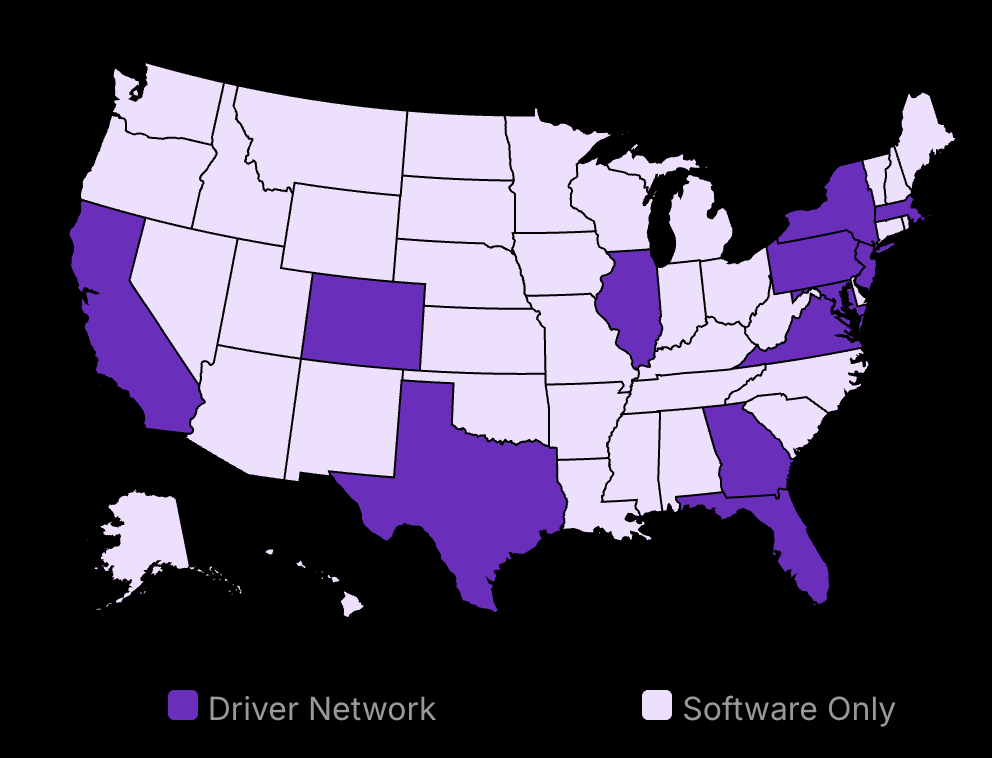Running a local shop in 2025? Cash flow problems can hit when you least expect them. A sudden equipment breakdown. A golden chance to buy inventory at half price. These moments demand quick financial decisions to help your business grow.
Traditional business loans used to mean weeks of waiting, mountains of paperwork, and frustrating rejections. But that’s not true anymore. Today’s fast business loans work on different rules. The waiting time? Hours, not weeks. The paperwork? Minimal. The approval odds? Better than ever.
Small local businesses across America are using these new options to solve immediate problems and grab opportunities that would have slipped away in the past. What’s changed? AI-powered lending systems now analyze your business health in minutes. Online platforms have removed the need for in-person meetings. Alternative lenders have created products specifically for small, local businesses.
Capital Concerns: In the past year, 35% of small business owners applied for a loan or credit line, and 77% are concerned about accessing capital.
The loan landscape of 2025 rewards speed and simplicity. But not all fast loans are good loans. The wrong choice could cost you in hidden fees or trap you in problematic repayment terms.
That’s why we’ve created this straightforward guide to fast business loans built for local shops in 2025. We’ll walk you through current trends, application requirements, and how to choose options that won’t hurt your business long-term. No financial jargon. No complex terms. Just clear information to help you get the funding you need, when you need it, and get the full picture.

Metrobi drivers are rated 4.97 out of 5
Trusted by local businesses for:
- Background-checked professionals
- Specialized in business deliveries
- Same drivers for consistency
- 4.97/5 average delivery rating
Step 1: Understanding 2025 Business Loan Trends
Local businesses now have more options than ever before.
Technology has changed how loans are approved and processed.
Understanding current trends helps secure better financing terms.
1. Key Loan Trends for Local Store Business Owners
The lending landscape has changed drastically in 2025. Short-term loans have become the preferred choice for many local store owners due to their quick access to capital and shorter commitment periods. These loans allow business owners to address immediate needs without long-term debt burdens.
Market Growth Projection: The global small business lending market is projected to grow at 13% CAGR from 2024–2032, reaching $7.22 trillion.
Financial institutions are recognizing the value of serving local businesses. However, approval rates tell a different story. While loan demand has increased, approval rates have declined across some financial institutions. Small banks often remain a good option for full loan approval.
Fintech Resilience: In Q4 2024, fintech loan inflows dropped only 1%, while traditional bank loan inflows dropped nearly 25%.
Interest rates for various loan programs have been directly affected by the Federal Reserve’s monetary policy shifts in 2025. The recent cooling of inflation has allowed rates to decrease, creating a more favorable borrowing environment with more options for both fixed rate loans and variable rate loans. Despite this positive change, it’s worth noting that credit standards have tightened, making qualification more challenging despite the more attractive rates.
Analyzing Economic Factors Affecting Local Business Loans
Economic indicators continue to influence loan availability and terms for local businesses. Recent data suggests lenders are shifting focus toward smaller enterprises, creating potential opportunities for local store owners. The Federal Reserve’s Small Business Credit Survey paints a challenging picture, highlighting the growing financial pressure on local businesses and making access to appropriate financing more critical than ever.
For local store owners, this means being extremely strategic about when and how to seek financing. The timing of loan applications should align with both business needs and broader economic trends to maximize approval chances.
2. Technology’s Role in Loan Processing
Artificial intelligence has transformed loan processing for local businesses in 2025. What once took weeks now happens much faster. AI algorithms analyze business financial data, credit histories, market conditions, and industry trends to make faster, more accurate credit decisions. This speed gives store owners quick answers about their financial options without extended waiting periods.
AI Processing Speed: AI can reduce loan processing time by up to 70%, from weeks to minutes.
The reduction in paperwork has been another significant advancement. Digital platforms now allow business owners to upload documents directly, often using optical character recognition (OCR) technology to extract relevant information automatically. Many lenders have created user-friendly mobile apps and web portals where businesses can track their application status in real-time, making the entire process more transparent and ready for an online checkout.
Business data integration capabilities have also improved significantly. Accounting software like QuickBooks, Xero, and FreshBooks now connect directly to loan application platforms, allowing for automatic financial data sharing. This integration eliminates manual data entry errors and provides lenders with verified financial information, improving both approval rates and speed for qualified applicants.
Behind the Technology: How Processing Has Evolved
The technical infrastructure supporting loan processing has seen remarkable advancements. Machine learning models now predict business performance with greater accuracy by analyzing thousands of data points across various industries. These models consider factors traditional underwriting might miss, such as seasonal business patterns or local economic indicators.
Automated Underwriting: AI-powered systems can reduce loan processing time to as little as 30–60 seconds.
Blockchain technology has begun to play a role in loan verification processes. Some forward-thinking lenders use blockchain to verify business credentials, ownership structures, and financial histories in a tamper-proof system. This technology reduces fraud risk and speeds up verification. The benefits extend beyond just approval speed—the entire lending relationship has become more efficient through automated payment reminders, refinancing suggestions, and tailored financial advice.
3. Alternative Funding Sources Gaining Popularity
Beyond traditional bank loans, local stores now have access to a wider range of alternative funding options, including certain SBA loans. Revenue-based financing (RBF) has become particularly popular among retail businesses with consistent sales patterns. This model allows stores to receive upfront capital in exchange for a percentage of future sales, creating a more flexible repayment structure that adapts to business performance.
RBF Growth: Revenue-based finance (RBF) grew from $3.38 billion in 2023 to $5.78 billion in 2024—an annual growth of 70.9%.
Crowdfunding platforms have evolved to serve specific business niches. Platforms like MainVest focus specifically on local businesses, allowing community members to invest in neighborhood stores. This approach not only provides capital but also creates a loyal customer base with a vested interest in the business’s success.
RBF Market Forecast: The RBF market is set to reach $41.8 billion by 2028, growing at a 64.0% CAGR.
Community Development Financial Institutions (CDFIs) have expanded their presence, offering loans specifically designed for underserved communities and business owners who might face barriers with traditional lenders. These mission-driven financial institutions often provide more favorable terms and additional business support services that extend beyond the financial transaction.
CDFI Expansion: The number of certified CDFI credit unions grew 134% nationally between 2011 and 2025.
Industry-Specific Financing Options
Sector-specific financing has emerged as a significant trend in 2025. Lenders who specialize in particular industries—such as retail, food service, or personal care—have developed loan products that address the unique cash flow patterns and capital needs of these businesses. These specialized lenders understand industry-specific metrics and seasonality factors that generalist banks might view as red flags.
For example, retail-focused lenders might offer inventory financing that aligns payment schedules with sales cycles, while restaurant lenders might structure loans that account for the high initial equipment costs and gradual revenue growth pattern typical in food service. This specialization allows for more accurate risk assessment and often results in better loan terms for businesses that fit the lender’s focus area.
4. The Return of Relationship Banking
Despite technological advances, personal relationships between lenders and business owners have made a comeback in 2025. Many local businesses report greater success with community banks and credit unions where loan officers take time to understand their specific situation rather than relying solely on automated scoring systems that may not capture the nuances of their business checking account activity.
This relationship-based approach allows lenders to consider factors beyond the basic financial statements, such as the owner’s experience, the business’s role in the community, and future growth potential. Local lenders often have deeper knowledge of the regional economy and can better evaluate a business’s viability within that specific context. This highlights the advantage of working with lenders who can look beyond standardized metrics and consider the complete business story.
Building Effective Lender Relationships and Your Bank Account
Successful business owners in 2025 are proactively building banking relationships before they need loans. This might include maintaining business accounts at the same institution where they plan to seek financing, regularly updating their banker on business developments, and involving their banker in long-term planning discussions.
These relationships become particularly valuable when businesses face challenges or opportunities requiring quick financial decisions. Lenders who already understand the business can move faster and may be more willing to work through temporary difficulties that might cause an automatic rejection in a purely algorithm-driven system.
5. Environmental and Social Governance (ESG) Impact on Lending
A new factor influencing funding approval and terms is the growing emphasis on Environmental and Social Governance criteria. Lenders increasingly consider sustainability practices, community impact, and ethical business operations when making lending decisions. Businesses demonstrating strong ESG credentials may receive preferential rates and terms.
Local stores implementing energy-efficient systems, waste reduction programs, or community support initiatives can highlight these practices in applications. Some lenders have created specific “green loan” products with favorable terms for businesses making environmentally friendly improvements or operating in sustainable ways.
The social component has become equally important, with lenders looking favorably on businesses that create quality jobs, serve community needs, or support diverse ownership. This trend reflects both consumer preferences for socially responsible businesses and lenders’ recognition that such businesses often enjoy stronger community support and customer loyalty.
Documenting Your ESG Efforts
Business owners seeking to leverage their ESG practices for better loan terms should systematically document their initiatives and impacts. This might include energy usage reductions, waste diversion statistics, employee benefit programs, or community service activities. Many lenders now have specific sections in applications where businesses can highlight these aspects.
Third-party certifications like B Corp status, LEED certification for buildings, or industry-specific sustainability certifications can provide objective verification of ESG claims. Even simple documentation of community involvement, ethical sourcing policies, or owning registered trademarks can strengthen an application and potentially lead to better terms.
Step 2: Navigating Express Financing for Shops
Fast business funding can be approved quickly with proper preparation.
Digital lenders typically offer quicker approval than traditional banks.
Having organized financial documents ready before applying can cut approval time.
1. Finding Fast Approval Loans
In 2025, local shop owners have more options than ever for quick business financing. The speed of loan approval depends largely on where you look. Online lenders have taken the lead in fast approvals, with some offering decisions in hours rather than days or weeks.
Digital-first lenders have streamlined their application processes significantly. These platforms use automated systems to evaluate your business data quickly. Most allow you to connect your business accounts directly to their platform, which speeds up the verification process. When searching for fast approval loans, look specifically for terms like “same-day approval” or “24-hour funding” in the lender’s marketing materials.
Peer-to-peer lending platforms have also evolved into valuable options for local shops. These sites connect businesses directly with individual investors. The benefit here is that these platforms often have more flexible criteria than traditional banks. While you might wait slightly longer for funding, the approval process can be quicker because you’re being evaluated by actual people who may value your business story more than a standard algorithm would.
Selecting Lenders Based on Your Timeline
If you need truly rapid funding, consider these specialized options:
Merchant cash advances: While more expensive, these can provide same-day funding based on future credit card sales.
Invoice financing: If you have outstanding invoices, some lenders can advance you the majority of the invoice value quickly.
A working capital loan: Once approved, you can draw funds immediately when needed.
When evaluating lenders, pay close attention to their stated “time to funding” rather than just “approval time.” Some lenders might approve you quickly but take much longer to actually deposit funds.
2. Preparing Essential Documents for Your Business Bank Account
The fastest way to slow down a loan application is missing documentation. In 2025, lenders still need specific financial information, but the way you provide it has become more streamlined. Having all your documents ready before applying can significantly reduce approval time. An increasingly popular option gaining attention among local business owners is no documentation loans, often called no doc loans. These loans require minimal paperwork, focusing instead on other eligibility criteria such as business cash flow or bank statements. If you find traditional document-heavy applications a hurdle, exploring the benefits and caveats of no doc business loans could offer a faster route to financing. For a deeper understanding, check out our comprehensive overview of how no documentation loans work and whether they could be the right fit for your shop.
For business owners considering this streamlined approach, it’s essential to weigh the pros and cons carefully. Understanding how no documentation loans impact approval odds and repayment terms can prepare you for making informed decisions. While these loans expedite access to capital, they may come with higher interest rates or stricter qualification criteria. Exploring external expert insights can provide valuable context on whether these loans align with your shop’s financial strategy and growth plans.
For most express business funding, you’ll need to prepare the following core documents: Understanding the specific documentation lenders require can streamline your application process significantly. Entrepreneurs looking for clarity on these essentials will find comprehensive guidance in this detailed post about the key business loan requirements tailored for small business owners. It breaks down the critical paperwork and criteria, making the loan preparation process straightforward and manageable.
Understanding the exact business loan requirements for entrepreneurs is crucial for expediting your loan approval in 2025. This comprehensive resource outlines necessary documents, eligibility criteria, and tips to enhance your application’s success, helping you navigate lender expectations with confidence.
Business tax returns (last 2 years)
Personal tax returns (last 2 years)
Bank statements (last 3-6 months)
Profit and loss statements
Balance sheets
Business plan (for newer businesses)
Business licenses and registrations
The quality of these documents matters as much as having them ready. Clean, organized financial statements with clear labeling make it easier for loan officers or algorithms to process your information quickly.
Document Organization Systems
Create a digital filing system specifically for your loan application process. Consider using cloud storage platforms like Dropbox Business or Google Drive to organize your documents into clearly labeled folders. This makes it easy to access and share them when needed.
For financial statements, using accounting software like QuickBooks, Xero, or FreshBooks allows you to generate professional-looking reports instantly. Many lenders can now connect directly to these platforms, pulling the data they need without requiring you to upload PDFs.
Here’s a simple document preparation checklist:
Create a master folder called “Business Loan Application 2025”
Set up subfolders for each document category (Tax Returns, Financial Statements, etc.)
Name files clearly with document type and date (e.g., “Business_Tax_Return_2024.pdf”)
Ensure all documents are in searchable PDF format
Have both digital and printed copies available
Remember that lenders increasingly use optical character recognition (OCR) to scan your documents, so make sure all PDFs are high quality and text is clear.
3. Speeding Up the Application Process
The application itself is where many business owners lose valuable time. In 2025, the most efficient loan applications are completed in a single sitting with all information at hand.
Start by gathering this personal and business information before sitting down to apply:
Business EIN and formation date
Personal and business credit scores (check these in advance)
Revenue figures for the past 12-24 months
Monthly expenses breakdown
Specific loan amount needed and purpose
Collateral details (if applicable)
Pre-Application Preparation
Before submitting any applications, take these steps to speed up the process:
Check your credit reports: Review both personal and business credit reports for errors. Having excellent credit will significantly improve your chances.
Calculate your debt service coverage ratio (DSCR): Lenders use this to determine if you can afford the loan. Your income should be higher than your debt obligations.
Prepare a one-page business summary: Create a concise overview of your business, including your value proposition, customer base, and growth trajectory. This helps lenders quickly understand your business model.
Gather proof of business ownership: Have operating agreements, articles of incorporation, and business licenses ready.
Document your collateral: If you’re offering collateral, prepare recent appraisals or valuations.
When actually filling out applications, set aside uninterrupted time. Most online applications can be completed quickly if you have all information ready. Save partially completed applications when possible, as some platforms allow you to return to finish them.
4. Understanding Approval Timelines for New Businesses
For new businesses with limited operating history, the approval process typically takes longer. If your LLC was formed within the past year, expect additional scrutiny from lenders.
New businesses (under 1 year) can improve their chances of fast approval by:
Providing a detailed business plan with market analysis
Showing strong personal credit history
Offering additional collateral or a personal guaranty
Demonstrating existing contracts or purchase orders
Including partners or co-owners with established business experience
The fastest funding options for new LLCs are typically:
Business credit cards (approval possible within minutes)
Financing for new equipment (where the equipment serves as collateral)
Microloans from community development financial institutions (CDFIs)
Crowdfunding platforms like Kickstarter or Indiegogo
Timeline Expectations for New Businesses and Equipment Financing
For businesses less than a year old, realistic approval timelines vary. Business credit cards can be approved quickly. Online lenders with startup programs may take a few days, similar to equipment financing. Traditional bank loans are unlikely without a longer operating history. SBA microloans can also be a viable option, though they may take longer to process.
5. Same-Day Funding Options and a Business Line for Emergencies
When your business faces an emergency requiring immediate cash, several 2025 financing options can provide truly same-day access to funds, sometimes as a one time lump sum. Another important consideration for local businesses in 2025 is securing specialized financing for essential assets like vehicles. Many lenders now offer tailored options that cater specifically to the needs of small shops requiring transport or delivery capabilities. Exploring the best choices can save you money and simplify approvals. Check out this comprehensive guide on top business auto loan options for local businesses to understand the terms, eligibility, and benefits available.
For many local businesses, having reliable transportation is crucial to day-to-day operations. Whether for deliveries, transporting goods, or service calls, a suitable vehicle can make a significant difference. Fortunately, 2025 brings a wave of specialized financing options tailored specifically to local shops looking to secure a business vehicle without excessive upfront costs. These options range from traditional auto loans to innovative leasing programs, each designed to fit various credit profiles and business needs. If you’re considering upgrading or acquiring a new business vehicle, it helps to understand the landscape. For insights into the most fitting and cost-effective vehicle financing choices, explore our detailed review of business auto loan alternatives.
Business credit lines with instant access: Many online lenders now offer pre-approved credit lines that, once established, allow for instant transfers to your business bank account. Some platforms can deposit funds within hours of a draw request. A lump sum can be used for a specific, large expense.
Merchant cash advances: While these carry higher costs, some providers can deposit funds the same day based on your processing history with their platforms.
Fintech payment advances: Some services analyze your payment processing data to offer instant advances based on your sales patterns.
For same-day funding, expect to pay a premium. The convenience of immediate access typically comes with higher costs than standard loans.
Emergency Funding Preparation
To access emergency funds quickly when needed:
Establish relationships with lenders before emergencies occur
Maintain a strong business credit profile
Consider keeping a business credit card with a high limit for emergencies
Explore setting up pre-approved credit lines when cash flow is strong
Maintain clean, up-to-date financial records at all times
Consider creating an “emergency funding folder” with all essential documents already prepared. This can save critical hours when quick decisions are needed.
6. Strategies for Faster Loan Processing
Beyond having your documents ready, several strategies can help move your application through the system faster.
Apply early in the business day: Submitting applications in the morning typically means your application begins processing that same day. Late afternoon applications often don’t get reviewed until the next business day.
Choose lenders with pre-qualification options: Many online lenders offer “soft pull” pre-qualification that won’t affect your credit score but gives you a good idea of approval odds and potential terms.
Consider working with a broker: Loan brokers have established relationships with multiple lenders and know which ones are currently funding quickly. They can direct your application to the most efficient options based on your specific situation.
Follow up strategically: After submitting your application, wait a day or two before following up. When you do follow up, ask specific questions about what might be needed to expedite the process.
Step 3: Meeting Lender Criteria for Your Local Store
Know exactly what lenders want to see from local store owners.
Learn how to showcase your business strengths effectively.
Discover documentation techniques that improve approval odds.
1. Assessing Your Store’s Needs
Before approaching lenders, you need a clear understanding of what your business requires financially. This critical first step often determines whether your loan application succeeds or fails. In 2025, lenders increasingly expect businesses to demonstrate thoughtful planning rather than just asking for the maximum amount available.
Start by conducting a thorough financial assessment of your store. Review your cash flow statements from the past one to two years to identify patterns and determine how much additional capital you genuinely need. This makes an accurate need assessment essential for funding success and helps you project your annual revenue.
Setting Clear Loan Purpose Objectives
Lenders want to know exactly how you’ll use their money. Create a detailed breakdown of planned expenses:
Inventory expansion: Calculate precise costs for new product lines
Equipment purchases: Include quotes from vendors for each item
Renovation costs: Obtain contractor estimates for physical improvements
Marketing campaigns: Develop specific budgets for each channel
Staff expansion: Project salary and benefit costs for new positions
This level of detail shows lenders you’ve done your homework. Applications with specific purpose statements are more likely to receive approval than those with vague objectives.
Calculating Repayment Capacity
Your ability to repay is the top concern for any lender. Create projections that show monthly revenue forecasts based on historical data, projected expenses including the new loan payment, and a cash flow analysis showing your debt service coverage ratio (DSCR).
Most lenders expect a positive DSCR, meaning your net operating income should be more than your total debt payments. Work backward from these calculations to determine the maximum loan amount your business can reasonably handle. This prevents overextending and demonstrates financial responsibility to lenders.
2. Building a Strong Application
Once you’ve assessed your needs, it’s time to create an application that stands out. In the competitive lending environment of 2025, a strong application package can make the difference between a favorable credit approval and rejection.
Crafting Your Business Narrative
Local stores have a significant advantage over online-only businesses: they have tangible community connections and customer relationships. Highlight these assets in your application.
Start by creating a compelling business profile that includes:
Your store’s history and founding story
Your unique position in the local market
Customer testimonials and community impact
Challenges you’ve overcome and lessons learned
Growth trajectory with specific metrics
Loan officers are more likely to approve applications that include concrete examples of community impact and business resilience.
Showcasing Success Metrics
Numbers tell a powerful story about your business health. Prepare a concise summary of key performance indicators:
Year-over-year revenue growth percentages
Customer acquisition costs and retention rates
Inventory turnover rates compared to industry averages
Profit margin trends over the past 2-3 years
Social media engagement and foot traffic statistics
Present this data visually when possible. Charts showing positive trends are easier to process than raw numbers. If you have areas of weakness, address them directly with improvement plans rather than hoping lenders won’t notice.
Developing Revenue Projections
Future revenue projections need to be both optimistic and realistic. Lenders see dozens of applications with inflated numbers, so grounding your projections in reality helps build credibility.
Create three projection scenarios: a conservative case, your most likely outcome, and a best-case scenario with assumptions clearly stated. Support each scenario with market research data specific to your local area, industry trend analysis from reputable sources, historical performance of similar initiatives in your business, and competitive analysis showing market opportunity.
Documenting Store Assets and Collateral
Physical stores have tangible assets that can serve as loan collateral, improving your approval odds and potentially lowering interest rates.
Create a comprehensive asset inventory including:
Real estate (if owned) with current market valuation
Equipment and fixtures with depreciated values
Inventory with current wholesale valuation
Intellectual property such as patents
Accounts receivable that could be used for asset-based lending
Include recent appraisals or valuation statements when applicable. For inventory, explain your inventory management system and how you maintain accurate counts.
3. Preparing Financial Documentation
Lenders require substantial financial documentation to evaluate your application. In 2025’s digital lending environment, organization and completeness are paramount, as some lenders may require collateral.
Most local store loan applications require:
Business tax returns (past 3 years)
Personal tax returns for all owners with a significant stake
Year-to-date profit and loss statement
Current balance sheet
Business bank statements (past 12 months)
Accounts receivable and payable aging reports
Business plan with financial projections
Personal financial statements for guarantors
Incomplete documentation is a primary reason for processing delays. Create a checklist and verify all documents before submission.
Enhancing Your Business Credit Profile
Your business credit profile significantly impacts funding decisions. Take these steps to strengthen your profile:
Verify accuracy of your business credit reports with Dun & Bradstreet, Experian, and Equifax
Address any discrepancies or negative items with documentation
Establish trade credit with suppliers and ensure they report to credit bureaus
Maintain separate business and personal finances consistently
Pay down existing business debt to improve debt-to-income ratios
Start this process at least a few months before applying for funding. Businesses that actively monitor and manage their business credit profiles are more likely to be approved than those who don’t.
Addressing Past Financial Challenges
Many local stores faced difficulties during recent economic disruptions. Rather than hiding these challenges, address them directly. Explain specific circumstances that caused difficulties, document recovery actions taken, and show trend lines illustrating improvement. Provide context with industry or regional comparison data and include testimonials from vendors or partners who supported you.
Lenders appreciate transparency and evidence of resilience. Many consider a business’s recovery from setbacks as important as their overall financial history.
Step 4: Streamlined Process for Simplified Small Business Funding
Fast-track your funding by comparing online and traditional lending options.
Explore community development loans and microloans as viable alternatives.
Use specific lender comparison strategies to find the best terms for your business.
Funding for local businesses has become more accessible in 2025, with streamlined processes that save time and reduce stress. Local shop owners now have multiple paths to secure capital quickly. The key is knowing how to navigate these options efficiently and choose the right funding source for your specific needs.
1. Online Versus Traditional Banks for Competitive Rates
The choice between online lenders and traditional banks represents one of the most important decisions in your funding journey. Each option offers distinct advantages depending on your priorities.
Online lenders have revolutionized lending with their rapid approval processes and minimal paperwork requirements. Many digital platforms now offer decisions quickly. These lenders typically use automated underwriting systems that evaluate your business data in real time. While online lenders excel in speed, this convenience can come with different interest rate structures.
Big Bank Approval Rates: Big banks (>$10B assets) approve only about 13% of loan applications.
Traditional banks still maintain significant advantages for established businesses with strong credit profiles. They often offer competitive interest rates, larger loan amounts, and more flexible repayment terms. However, their application processes remain more rigorous.
“Despite current challenges, the landscape of borrowing presents opportunities for growth and resilience. Many businesses are finding creative financing solutions and innovative partnerships to thrive in an evolving market,” notes Weitz of United Capital.
Community banks deserve special attention in this comparison. These smaller, local institutions often have higher approval rates than large national banks. They often provide personalized service and deeper understanding of local market conditions. Community banks typically blend the relationship benefits of traditional banking with faster processing times, making them an excellent middle ground option.
Making the Right Choice Based on Your Timeline
Your funding timeline should heavily influence your lender selection. If you need capital within days, online lenders offer the clear advantage. For less time-sensitive needs, the potentially lower interest rates from traditional banks may outweigh the convenience factor of online lenders.
Digital lenders shine in scenarios requiring quick action—like purchasing discounted inventory, covering emergency repairs, or seizing time-sensitive opportunities. Traditional banks excel for planned expansions, equipment purchases, or refinancing existing debt where timing flexibility exists.
2. Exploring Alternatives to Bank Loans
Beyond traditional bank loans and online lenders, several alternative funding sources have gained traction for local businesses in 2025. These options often serve specific niches or provide more flexible terms than conventional loans, and may not always require a personal guaranty.
Community Development Financial Institutions (CDFIs) represent one of the most valuable resources for local shop owners. These mission-driven lenders focus specifically on economic development in underserved communities. CDFIs offer competitive rates and more flexible qualification requirements. They evaluate applications holistically, considering community impact alongside financial metrics.
Microloans provide another powerful option, particularly for businesses seeking smaller amounts of capital. These loans often come with technical assistance and business development support. Organizations like Accion, Kiva, and the SBA microloan program connect businesses with capital while providing education on financial management.
Revenue-based financing has emerged as a flexible alternative that links repayment directly to your business performance. Instead of fixed monthly payments, you pay a percentage of monthly revenue until reaching a predetermined repayment cap. This structure creates natural flexibility during slower business periods.
RBF Repayment Terms: RBF repayments typically range from 3–8% of revenue, depending on the agreement.
Peer-to-peer lending platforms continue to evolve, connecting businesses directly with individual investors. These platforms have simplified their processes significantly in 2025, with many offering specialized funding options for retail businesses.
Matching Alternative Funding to Business Needs
Each alternative funding source addresses specific business scenarios. CDFIs excel for businesses with strong community ties but perhaps weaker traditional financial metrics. Their evaluation considers factors like job creation, neighborhood revitalization, and services provided to underserved populations.
Microloans work best for specific projects with clear return potential—like purchasing inventory, minor renovations, or launching marketing campaigns. The technical assistance that accompanies many microloan programs provides additional value beyond the capital itself.
Revenue-based financing suits businesses with strong, consistent revenue but irregular cash flow patterns. Retail shops with seasonal fluctuations often benefit from this model’s built-in flexibility. During slow months, payments decrease automatically, reducing financial strain when you need relief most.
For businesses with strong social networks or compelling stories, peer-to-peer lending platforms offer a way to leverage relationships while securing formal financing. These platforms have become particularly valuable for businesses with niche products or services that might not fit neatly into traditional lending categories.
Step 5: Advanced Tips for Optimizing Your Loan Process
Save time and money by knowing the right questions to ask lenders.
Avoid common mistakes that delay funding approvals.
Protect your business interests through better negotiation strategies.
Streamlining Communication with Lenders
Effective communication with lenders forms the backbone of a successful application process. Business owners who establish clear communication channels from the start often see faster approval times and better terms. Banks expect lending standards to evolve, with stronger demand anticipated across loan categories. This creates an opportunity for prepared business owners who can communicate effectively with their lenders.
Direct communication channels prove most effective when securing business funding. Phone calls often yield faster responses than emails for urgent matters, while secure messaging platforms within lender portals provide documented communication trails. Establishing a single point of contact at the lending institution can prevent miscommunications and reduce delays.
Following up regularly keeps your application moving through the pipeline. The optimal frequency depends on your lender’s size and processes. When following up, provide concise updates on any requested documents or information rather than simply asking for status updates. This approach positions you as a proactive borrower.
Common Pitfalls and How to Avoid Them
Missing document submission deadlines represents one of the most common reasons for loan processing delays. Lenders often have strict timelines for receiving supporting documentation, and missing these windows can restart your application process entirely. Create a detailed calendar with all submission deadlines, setting personal deadlines ahead of actual requirements.
Interest rate fluctuations can significantly impact your loan costs. Staying informed about market trends allows you to time your application strategically. Consider subscribing to financial newsletters focusing on lending or setting up alerts for relevant financial terms.
Rate Lock Considerations
Rate locks provide protection against rising interest rates during your application process. However, they typically have an expiration date and may carry fees for extensions. Before securing a rate lock, realistically assess your application timeline based on your documentation readiness and the lender’s known processing times. If your application involves complex business structures or unusual income sources, consider negotiating a longer initial rate lock period.
Negotiation Strategies Beyond Interest Rates
While interest rates receive the most attention, several other loan terms offer significant negotiation opportunities. Prepayment penalties can limit your flexibility if your business performs better than expected. Many lenders will reduce or eliminate these penalties. Similarly, covenant requirements (operational restrictions tied to your loan) often have more flexibility than lenders initially suggest.
Collateral requirements present another key negotiation point. Lenders typically prefer to secure loans with business assets, but you can often negotiate which specific assets are pledged. For retail stores, inventory makes poor collateral due to its changing value, while equipment or real estate provides more stable value. If personal guarantees are required, negotiate limited guarantees that cap your personal liability.
Fee structures often contain negotiable components that many borrowers overlook. Origination fees, application fees, and documentation fees may be reduced or waived entirely, particularly in competitive lending environments. Competitive pressure in the market often gives borrowers more negotiating leverage on fees.
Strategic Timing for Loan Applications
The timing of your application can significantly impact approval odds and terms. Lenders typically have quarterly and annual goals that influence their lending appetite. Applications submitted early in a quarter or fiscal year often receive more favorable consideration as loan officers have fresh quotas to fill.
Seasonal considerations also affect loan approval, particularly for retail businesses. Applying during your industry’s off-season provides lenders with a more conservative view of your business performance, while showing year-over-year growth. This can strengthen an application.
Economic Timing Factors
Economic indicators like Federal Reserve announcements about interest rates can create strategic windows for applications. Monitoring the Federal Reserve’s meeting calendar allows you to time applications advantageously. Applications submitted before anticipated rate changes may benefit from lenders eager to lock in business.
Leveraging Technology to Streamline Documentation
Digital document organization systems dramatically improve application efficiency. Cloud-based services allow you to create dedicated folders for tax returns, financial statements, and business licenses—all searchable and instantly shareable. These tools can help you meet all minimum requirements with ease.
Financial data aggregation tools connect directly to your accounting software and banking platforms to generate real-time reports lenders require. These tools not only save time but also reduce manual entry errors that can delay applications. Some lenders may even offer incentives for businesses that provide digital access to their financial systems during the loan term.
Automation Tools for Application Tracking
Application tracking systems help manage multiple applications simultaneously. Small businesses can create effective tracking systems using project management tools like Trello, Asana, or Monday.com. Create separate boards or projects for each application with standardized task lists. These systems prove particularly valuable when applying to multiple lenders simultaneously to compare offers.
Building Strength Through Credit Management
Proactive credit management in the months before applying substantially improves loan terms. Beyond the basic steps of checking business credit reports, addressing errors, and making timely payments, consider more strategic approaches. Credit utilization significantly impacts business credit scores.
Account distribution—the mix of credit types your business holds—also affects loan approval. Lenders prefer to see businesses successfully managing various credit types. If your business lacks diversity, consider adding trade credit relationships with suppliers who report to business credit bureaus or securing a small equipment lease before applying for larger financing.
Credit bureau preferences vary by lender, making it essential to build strong profiles across all major business credit bureaus. Building relationships with suppliers who report to different bureaus ensures your business credit strength is visible regardless of which bureau your target lender checks.
Business credit monitoring services provide alerts about changes to your business credit profile, allowing you to address negative items quickly. These services become especially valuable during the pre-application and application phases when unexpected credit report changes could derail approval.
Troubleshooting Common Issues
Get solutions for loan rejections and approval problems.
Learn how to turn financial weaknesses into strengths.
Discover next steps after rejection to improve future applications.
Solutions to Potential Loan Approval Problems
Loan applications get rejected for various reasons, but most can be addressed with the right approach. Financial history concerns top the list of problems business owners face when seeking funding. When lenders review your application, they focus on three main areas: credit history, cash flow patterns, and available collateral.
If your business shows irregular cash flow, prepare detailed explanations with supporting documents. For example, if your business is seasonal, provide year-over-year comparisons showing your ability to manage through slow periods. Some lenders may accept additional guarantees to offset perceived risk. These guarantees might include personal assets, higher down payments, or bringing in a co-signer with strong credit.
Addressing Credit Score Concerns
Credit score issues present another common roadblock. Low business credit scores often result from late payments, high credit utilization, or short credit history. Start improving your score by checking your credit reports for errors.
Set up automatic payments for all business obligations to avoid late payments. Work to reduce your credit utilization ratio. Consider getting a business credit card used solely for minor expenses that you pay off monthly—this builds positive payment history. Remember that credit improvement takes time.
Fixing Documentation Gaps
Incomplete documentation causes many preventable rejections. Review your application package carefully before submission. Common missing items include:
Incomplete or outdated financial statements
Missing tax returns
Unsigned forms or agreements
Insufficient business plan details
Missing proof of business registration or licenses
Create an application checklist specific to each lender, as requirements vary. When submitting documentation, organize it in the exact order requested by the lender. If a lender requests additional information during review, respond quickly.
Dealing with Rejection and Next Steps
Receiving a loan rejection can feel devastating, but successful business owners view it as valuable feedback rather than failure. Lenders are required to provide reasons for rejection, and this information gives you a roadmap for improvement.
Request detailed feedback if the rejection letter lacks specifics. Most lenders will provide this if asked. Make notes about each rejection reason and create an action plan to address each point. Keep your conversation with the lender professional.
Analyzing Lender Feedback
When analyzing feedback, look for patterns across multiple rejections. Common rejection reasons include:
Debt-to-income ratio too high
Insufficient business operating history
Industry risk concerns
Inadequate collateral
Too many recent credit inquiries
For each issue, create specific action steps. If debt-to-income ratio is the problem, focus on paying down existing debt before reapplying. If operating history is too short, consider alternative lending options designed for newer businesses while you build history.
Some rejections stem from factors beyond your control, like industry risk assessments. If lenders consider your industry high-risk, prepare additional documentation showing how your business differs from industry averages.
Revising Your Application Strategy
After identifying improvement areas, revise your application strategy before trying again. Consider the following approaches:
Try a different type of lender – if banks rejected you, explore online lenders or CDFIs
Start with a smaller loan amount to build a lending relationship
Add a detailed explanation letter addressing past issues
Strengthen your business plan with market research and growth projections
Consider applying with a lender specializing in your industry
Before submitting new applications, wait at least a couple of months while implementing improvements. Multiple applications in a short time create additional credit inquiries that can damage your score.
During this waiting period, focus on strengthening your business fundamentals. Improve inventory management, tighten accounts receivable processes, and build cash reserves. These improvements not only make your business more loan-worthy but also reduce your future borrowing needs.
Further Resources and Reading
Discover curated resources to deepen your business loan knowledge.
Learn why fast funding matters for local business success.
Find expert tools for comparing loan options.
Related Topics or Advanced Guides
Business loans don’t exist in isolation—they’re part of a larger financial ecosystem that affects your local shop’s success. Business owners who want to maximize their funding opportunities should expand their knowledge beyond basic applications.
Business credit forms the foundation of your borrowing potential. Credit availability has tightened in recent months. Despite these challenges, understanding how to build and leverage business credit can significantly improve your access to capital. Business credit functions differently from personal credit, with separate bureaus and scoring systems that lenders examine.
Comprehensive loan comparison tools have evolved significantly in 2025, making it easier to evaluate options across multiple dimensions. These tools now factor in not just interest rates but also term length, fee structures, and specialized industry factors. The growth in the lending market creates more options but also more complexity for business owners to navigate.
Why Access to Fast Business Loans Matters
Fast business loans provide crucial support during expansion phases when your cash flow might be stretched thin. When you’re opening a new location, refreshing inventory, or launching a new product line, timing is often critical. Having quick access to capital can mean the difference between seizing a market opportunity and watching it pass by.
Fast loans also create a competitive advantage in local markets. When competitors must wait for traditional financing, businesses with access to rapid funding can move quickly on opportunities like discounted bulk inventory purchases or time-sensitive equipment upgrades. This speed allows local shops to respond to market changes more effectively.
Research indicates that businesses with established quick-funding relationships demonstrate greater resilience during economic fluctuations. Having these relationships in place before you need them creates a financial safety net that can help your business weather unexpected challenges.
Contextualize the Importance of Fast Loans
Fast funding creates the agility needed to capitalize on sudden market opportunities. When a competitor goes out of business, or a supplier offers a limited-time discount on inventory, quick access to capital lets you move decisively. Local shops particularly benefit from this flexibility in seasonal markets where timing purchases can dramatically affect profitability.
Fast business loans also provide essential support during unforeseen events that threaten store operations. Whether facing unexpected equipment failures, building repairs, or temporary cash flow gaps, rapid funding helps maintain business continuity. In 2025’s challenging economic landscape, having multiple fast funding sources becomes even more critical.
The data supports this reality: many businesses want funding to meet operating expenses, while others seek available credit for future needs. This balanced approach—preparing for both immediate operations and future contingencies—represents the prudent financial strategy for today’s local business owners. Fast loans serve both purposes, allowing for quick adaptation to changing circumstances.
The landscape of fast business loans continues to evolve, offering local shops more options than ever before. By staying informed about these resources and understanding their strategic importance, you’ll be better positioned to make smart financial decisions that support your business growth and stability.
Conclusion
As we head into 2025, getting fast funding for your local shop doesn’t need to be hard. With AI-powered loan processing, online applications, and diverse options beyond traditional banks, local shop owners now have more paths to capital than ever before. The key is knowing what you need, preparing the right documents, and choosing the right lending source for your specific situation.
Remember that rejection isn’t the end—it’s a chance to strengthen your application. When you address lender concerns and keep improving your financial profile, you position your shop for success on your next try.
Fast business loans aren’t just about getting money quickly—they’re about seizing opportunities when they appear and keeping your doors open during tough times. By following the steps we’ve covered, you’ll be ready to secure the funding your local shop needs.
The business landscape moves quickly in 2025. With these financing options, your local shop can move just as fast, turning good ideas into growth and challenges into chances to shine.



























